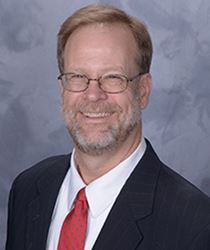Down the Rabbit Hole: Developing Professional Opinions

Personal vs. Professional Opinions
Everyone has one—an opinion, that is. On the face of it, an opinion seems so basic, so understood. An opinion is a view, judgment, or appraisal formed in the mind about a particular subject. One thing everyone does not have is a professional opinion. Personal opinions are born from beliefs, personal biases, past experiences, moral compass, and/or politics. Professional opinions are formed from data, science, evidence, principles, education, training, and/or relevant experience. There is a definitive difference between the two definitions. While personal opinions are more subjective, professional opinions must be objective. Let's go down the rabbit hole to discuss how professional opinions are developed, substantiated, and founded.
The Certainty of an Opinion
For this exercise, we must consider how an expert develops a professional opinion under the premise of certainty. If we were to put certainty on a scale from 0 to 100, with nonsense at 0% and fact at 100%, equilibrium happens in the middle. The middle would be where a professional opinion "waffles" or "teeters both ways" or, more simply, does not have any certainty in either direction.
As engineering experts, professional opinions are based on many factors including science and evidence, so if the scale tips, it tips in the direction of certainty. If certainty is greater than 50%, an expert could form an opinion stating the certainty of that professional opinion as being "more likely than not." A professional opinion at this level would be admissible in court. Anything less than certainty (~50%) would be considered unfounded or lacking merit--we'll call it "junk science."
Absent of 100% certainty (which plays a greater role in criminal law than in civil litigation), professional opinions are weighed by the preponderance of evidence. The goal of any expert should be to separate fact from fiction, setting aside personal opinions and presenting professional opinions based on facts, evidence, and analyses supported by testing through a scientifically supported methodology, such as the scientific method.
Scientific Knowledge vs. Junk Science
The purpose of validating professional opinions at the very beginning of an investigation foreshadows what happens months or years later when the expert presents such opinions to the trier of fact. A landmark case, Daubert v. Merrell Dow Pharmaceuticals, Inc. 509 U.S. 579 (1993), played a crucial role in establishing the admissibility of experts and their opinions, which subsequently led to the Daubert standard that we know today. Subsequent cases also elevated the current Daubert standards for expert witness testimony, including General Electric Co. v. Joiner, 522 U.S. 136 (1997) and Kumho Tire Co. v. Carmichael, 526 U.S. 137 (1999). In consideration of Daubert, the allowance for an expert to testify and subsequently offer opinions was established.
An expert may provide testimony of their professional opinions in conjunction with their qualifications, which are based on education, training, experience, skill, and knowledge. The Federal Rules of Evidence, Rule 702, Testimony by Expert Witnesses (FRE 702), states that an expert may testify only if, "(a) the expert's scientific, technical or other specialized knowledge will help the trier of fact to understand the evidence or to determine a fact in issue, (b) the testimony is based on sufficient facts or data, (c) the testimony is the product of reliable principles and methods and (d) the expert has reliably applied the principles and methods to the facts of the case."
In conjunction with FRE 702, the Daubert standard determines a conclusion is qualified as scientific knowledge if, "the proponent can demonstrate that it is the product of sound, 'scientific methodology' derived from the scientific method." Effectively, the justices on the case aimed to bar "junk science" while promoting the scientific method. The five critical factors at play include:
- Whether the theory or technique in question can be and has been tested
- Whether it has been subjected to peer review and publication
- The theory or techniques known or potential error rate
- The existence and maintenance of standards controlling the theory or techniques operation
- Whether theory or technique has attracted general acceptance within the relevant scientific community
It is clear that the legal system aims to hold experts accountable for their professional opinions with the intent to eliminate junk science and promote greater certainty.
Substantiating Opinions with the Scientific Method
The scientific method is a technique used in the development and testing of scientific hypotheses. In the forensics world, the scientific method is generally used to determine causation or extent of damage following a catastrophic event or allegation of defect. An opinion is developed through the following steps:
- What happened?
- What question needs to be answered? What has been alleged?
- Inspect and evaluate whether reported damage, defect, or other.
- Develop an "if, then" question.
- Experiment/test. Compare the physical evidence to the hypothesis. If necessary, form a new hypothesis and repeat steps until certainty is reached.
- Explain why the hypothesis is correct through tests/evidence.
- Present the professional opinion.
In parallel to the scientific method, is the industry standard published by the American Society of Testing and Materials (ASTM), ASTM E620 – Standard Practice for Reporting Opinions of Scientific or Technical Experts. A review of ASTM E620 reveals the parallel sections that hold experts accountable in forming and presenting professional opinions. Such includes evaluating the facts, using logic and reasoning, and presenting scientifically supported opinions and conclusions.
The Foundation of a Professional Opinion
One of the most crucial parts of a building is its foundation. A building will not stand without a structurally sound and supported foundation. There are parallels here to presenting a professional opinion, the building represents the professional opinion. The term "foundation" in the legal system shows up with regards to both evidence and experts. For instance, before evidence can be admitted at trial, the foundation for admitting such evidence must be laid by the party offering it. Further, the foundation must also be laid for the qualification of a witness who will testify as an expert.
As it relates to expert opinions, the "foundation" includes the first five tests of the scientific method, observe, question, research, hypothesize, and experiment/test. Without developing a hypothesis, testing the hypothesis, and comparing physical evidence to the hypothesis, how can a professional opinion be presented? They can't and they don't. Any such opinions that are not based on the foundational principles of the scientific method are unfounded and lack merit.
Professional opinions require review of the evidence, the application of logic and reasoning, a thorough evaluation of facts, and a foundation built on scientific knowledge and the scientific method. This approach affirms greater certainty and reliability of reporting, opinions, and testimony by experts.
Our experts are ready to help.

